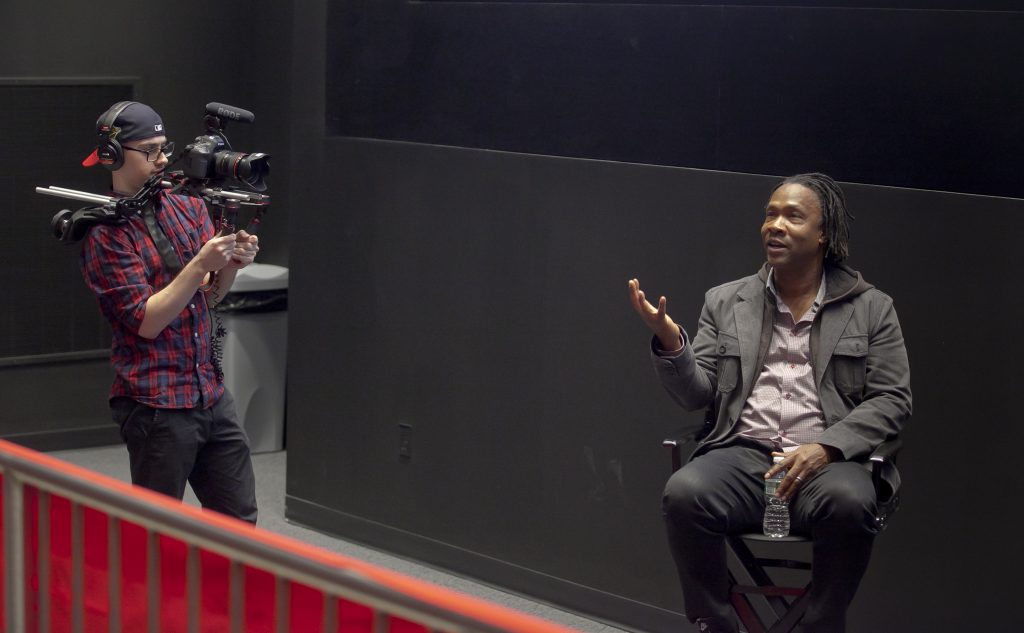
Some voices, to start…
From Albert Maysles, mayselsfilms.com
Very simply put, one of the great needs–maybe certainly one of the greatest needs in our world–is for us to know one another, to know what’s really going on in the world around us and to feel a commonality of need and purpose with other people. People of different walks of life, other nations, other ethnic backgrounds, economic statuses, different philosophies and religions… We need to find a common bond with the rest of humanity and documentary allows us to do that.
************
From A New History of Documentary Film, by Betsy A. McLane
Documentary is one of three basic creative modes in film, the other two being narrative fiction and avant-garde…. Documentary has as its root word document, which comes from the Latin docere, to teach.
************
From Documentary: A History of the Nonfiction Film, by Erik Barnouw
The documentarist has a passion for what he finds in images and sounds–which always seem to him more meaningful than anything he can invent. Unlike the fiction artist, he is dedicated to not inventing. It is in selecting and arranging his findings that he expresses himself.
*************
From Documentary Case Studies, by Jeff Swimmer
Making documentaries takes months and years, with high stress and low budgets. Partnerships are tested in the extreme, but when they’re built on complementary skills–a can’t-balance-my-checkbook director with a fundraising whiz, a shooter with an editor, a novice with a veteran–teams can thrive.
*************
From Doing Documentary Work, by Robert Coles
“The heart of the matter for someone doing documentary work is the pursuit of what James Agee called ‘human actuality’–rendering and representing for others what has been witnessed, heard, overheard, or sensed…. All documentation, however, is put together by a particular mind whose capacities, interests, values, conjectures, suppositions and presuppositions, whose memories, and, not least, whose talents will come to bear directly or indirectly on what is, finally presented to the world in the form of words, pictures, or even music or artifacts of one kind or another.”
**************
From Documentary Storytelling, by Sheila Curran Bernard
The power of documentary films comes from the fact that they are grounded in fact, not fiction. This is not to say that they’re “objective.” Like any form of communication, whether spoken, written, painted, or photographed, documentary filmmaking involves the communicator in making choices. It’s therefore unavoidably subjective, no matter how balanced, neutral, fair, or accurate the presentation seeks to be.
**************
From Shut Up and Shoot Documentary Guide, by Anthony Q. Artis
At the end of the day you can always dismiss powerful fiction as the work of someone’s imagination or an exaggeration of the real events. Powerful documentaries on the other hand, grab you by the collar and force you to seriously contemplate societies, ideas, and human realities that you might otherwise never acknowledge or think twice about.
**************
From Directing the Documentary, by Michael Rabiger
Modern documentary avoids telling us what to feel or think. Instead, it exposes us to contradictory, provocative evidence that moves us to inner debate and realization.
***************
From Introduction to Documentary, by Bill Nichols
Every film is a documentary. Even the most whimsical of fictions gives evidence of the culture that produced it and reproduces the likenesses of the people who perform within it. In fact, we could say that there are two kinds of film: 1) documentaries of wish-fulfillment (fictions) and 2) documentaries of social representation (non-fictions). Each type tells a story, but the stories, or narratives, are of different sorts.
Documentaries of social representation are what we typically call non-fiction. These films give tangible representation to aspects of the world we already inhabit and share. They make the stuff of social reality visible and audible in a distinct way, according to the acts of selection and arrangement carried out by a filmmaker. They give a sense of what we understand reality to have been, of what it is now, or of what it may become. These films also convey truths if we decide they do.
Fiction films may be content to suspend disbelief (to accept its world as plausible), but non-fiction often wants to instill belief (to accept its world as actual). This is what aligns documentary with the rhetorical tradition, in which eloquence serves a social as well as aesthetic purpose. We take not only pleasure from documentary, but direction as well.
Documentary engages with the world by representing it, and it does so in three ways:
- By offering a likeness or depiction of the world that bears a recognizable familiarity.
- By standing for or representing the interests of others.
- By putting the case for a particular view or interpretation of evidence before us
Documentaries are not reproductions of reality—they are representations of reality. We ask more of a representation than we do of a reproduction.
